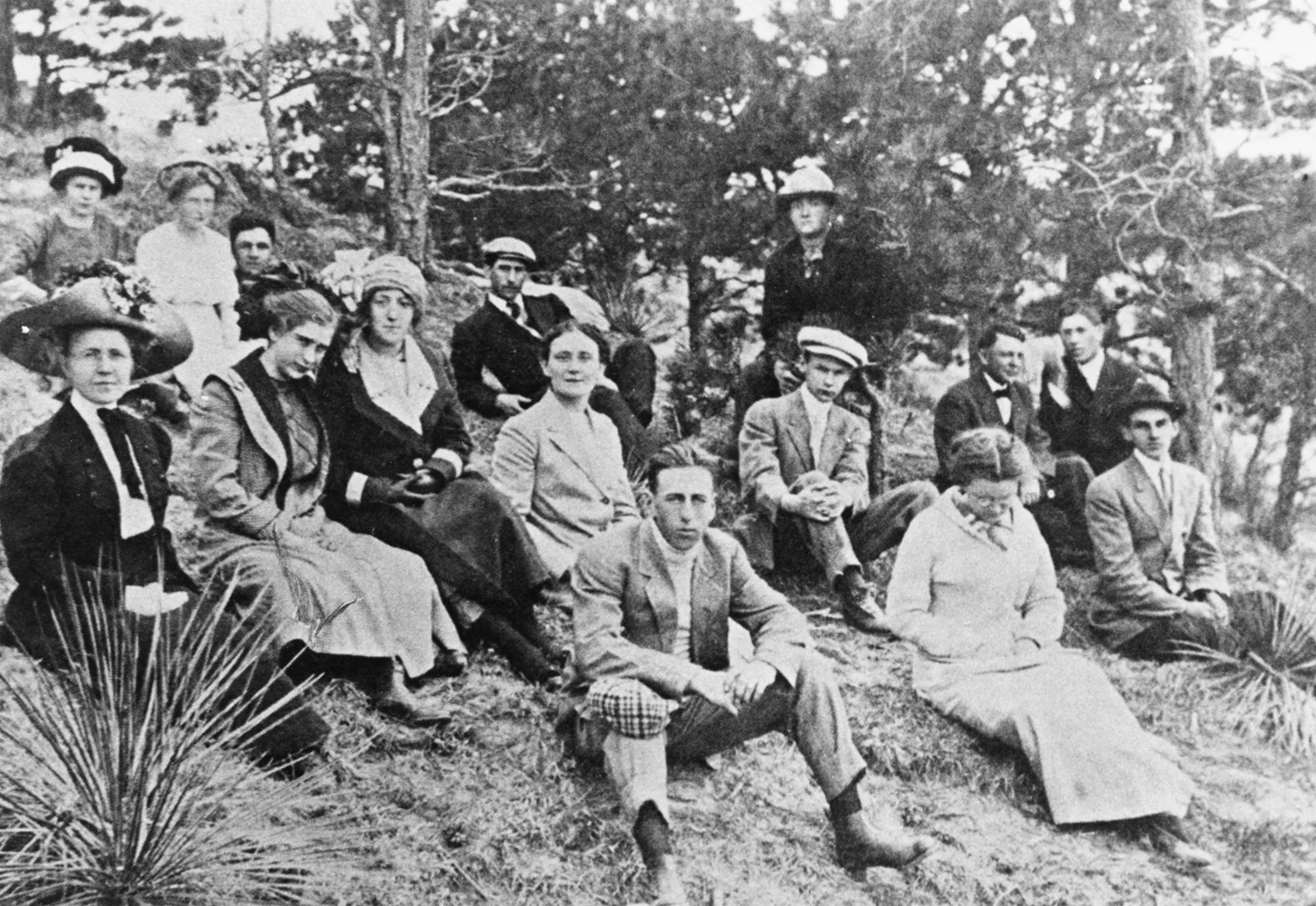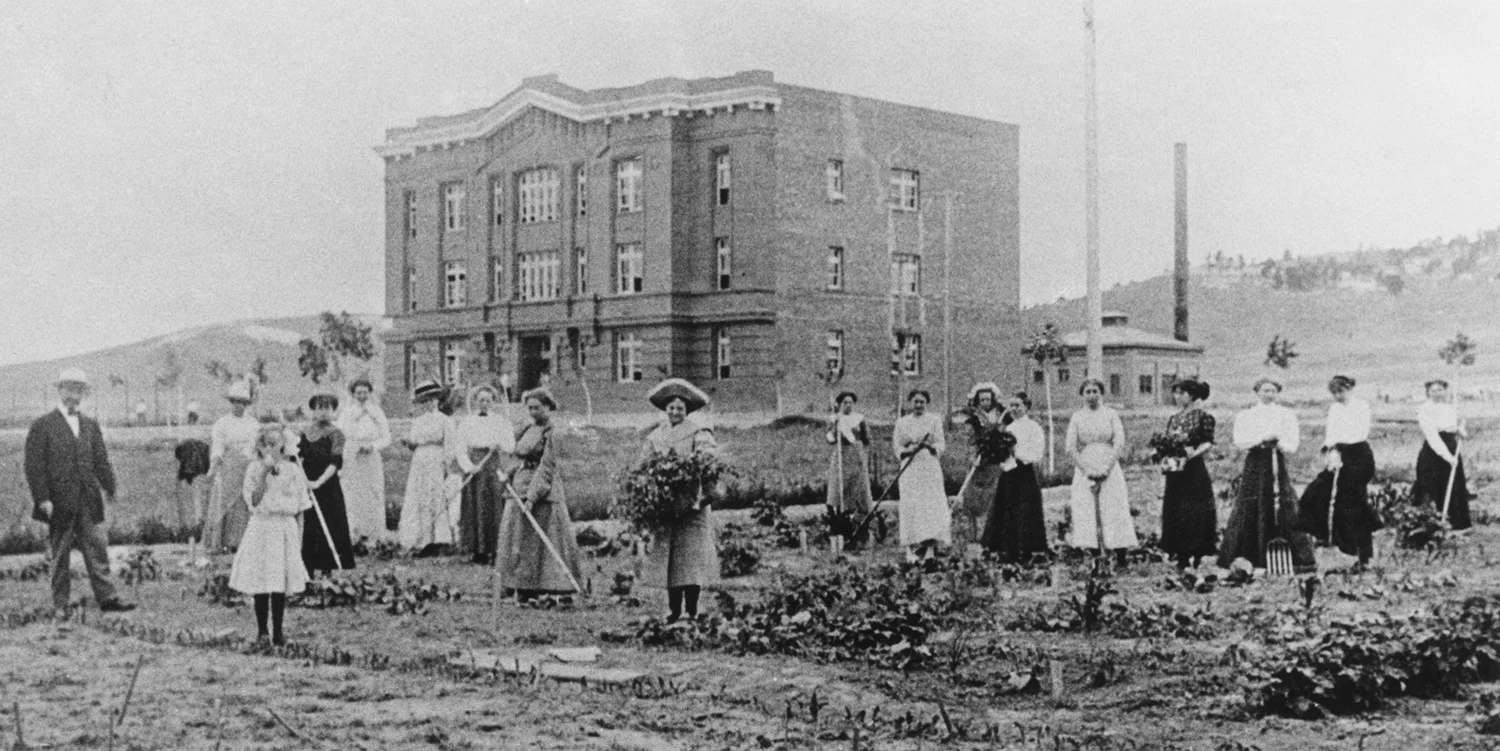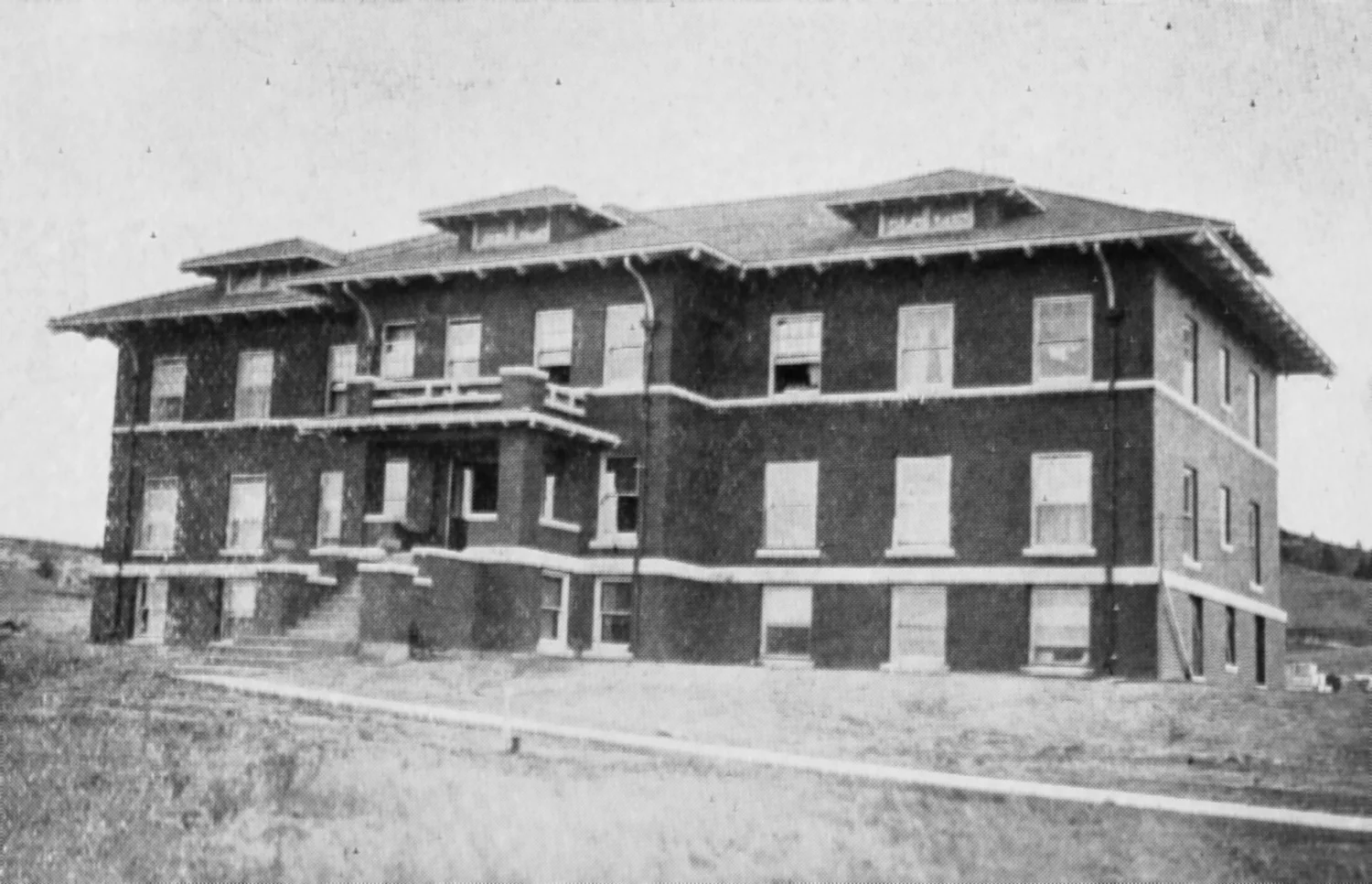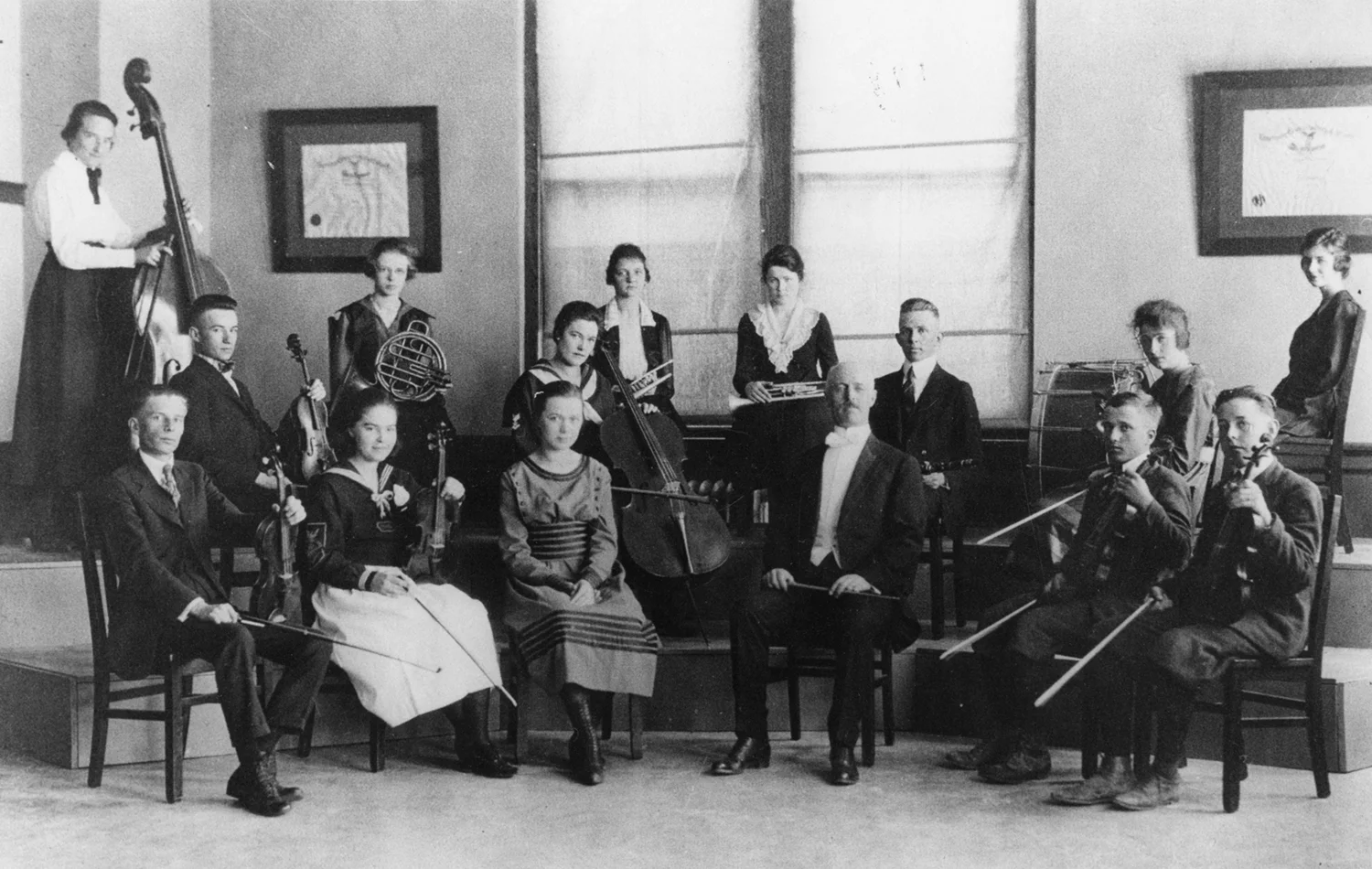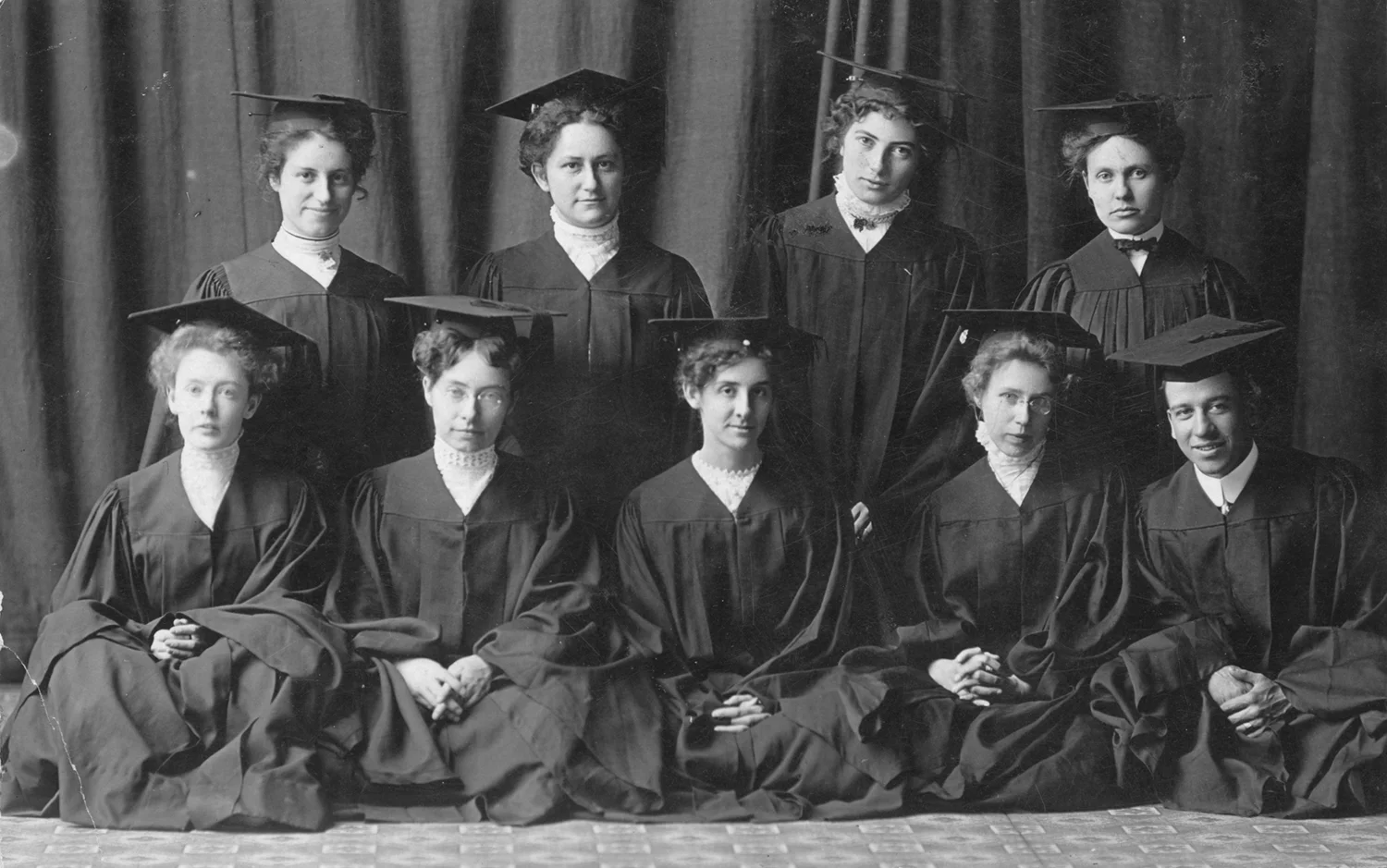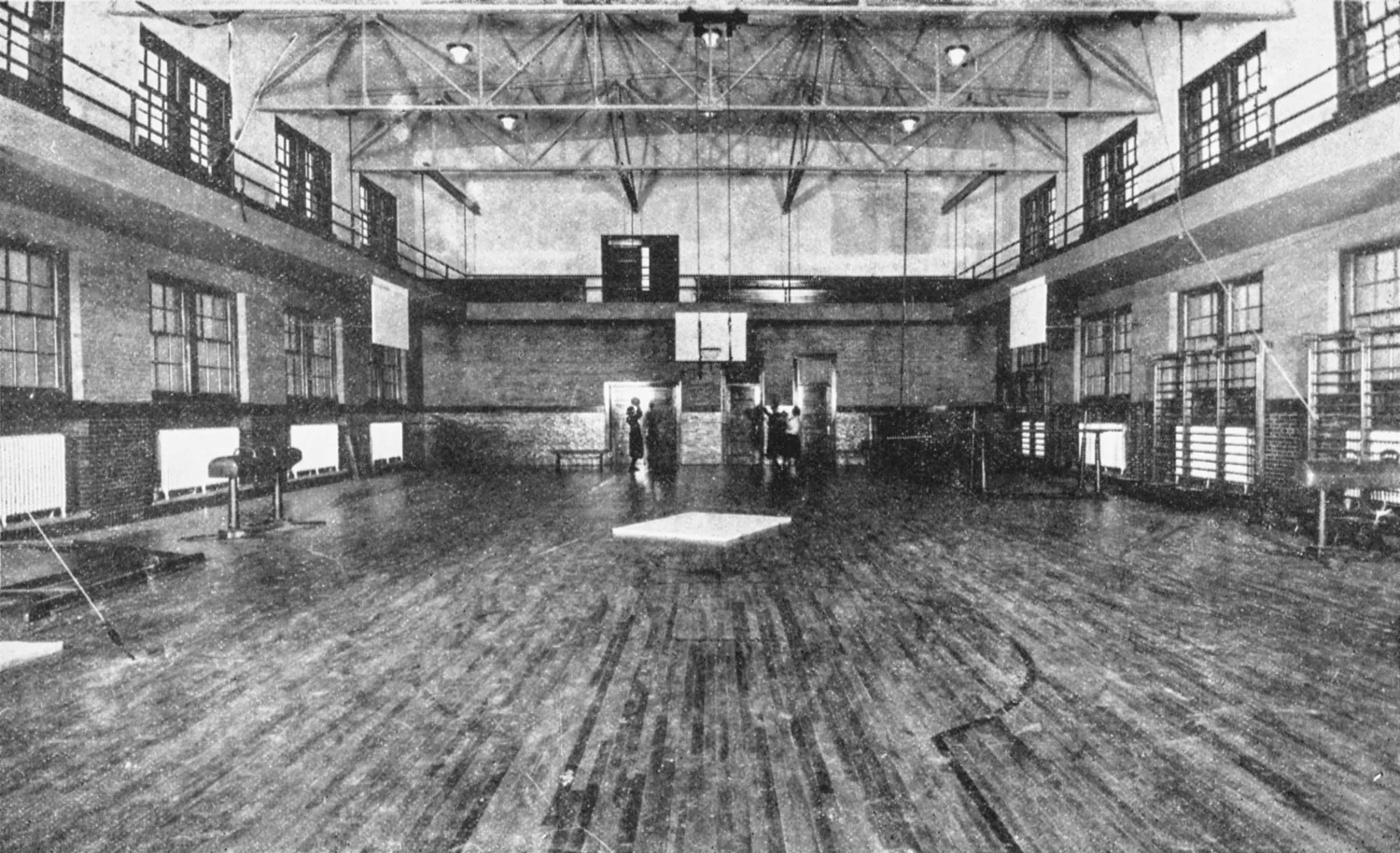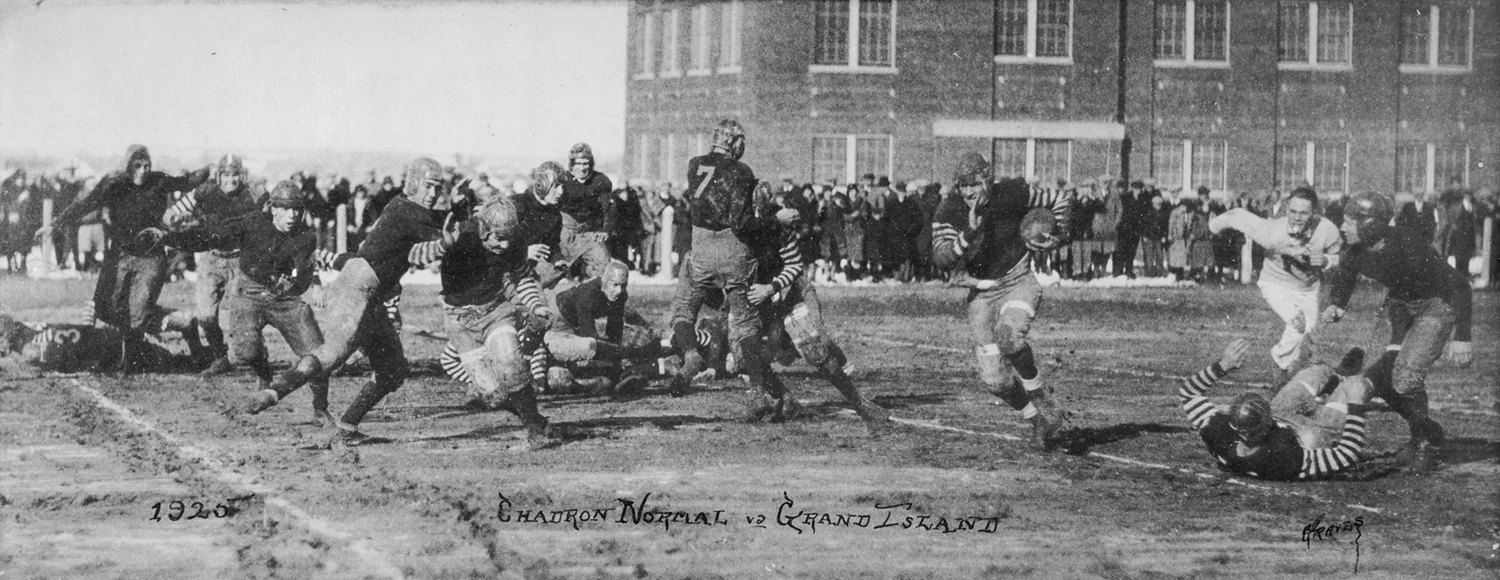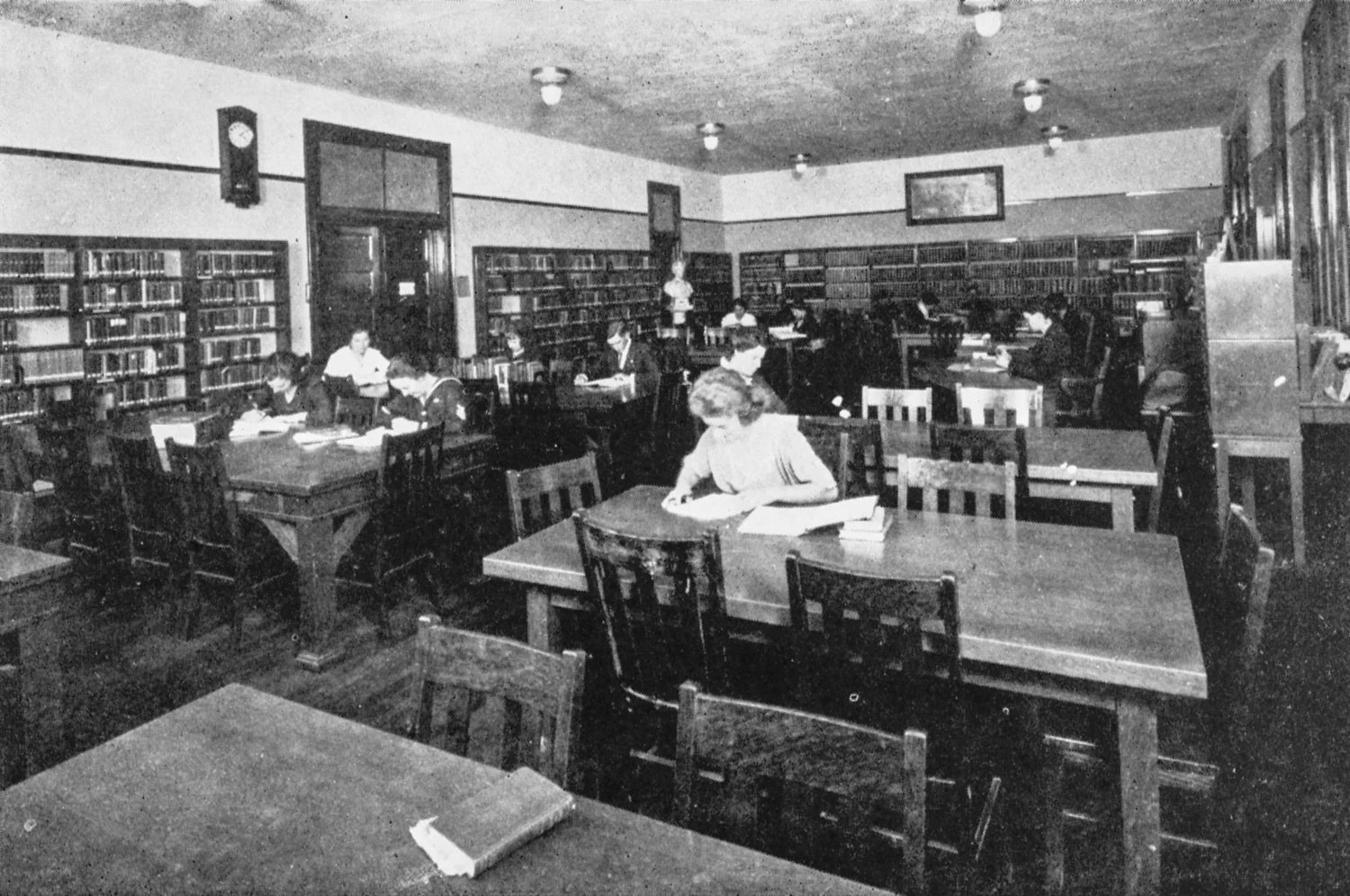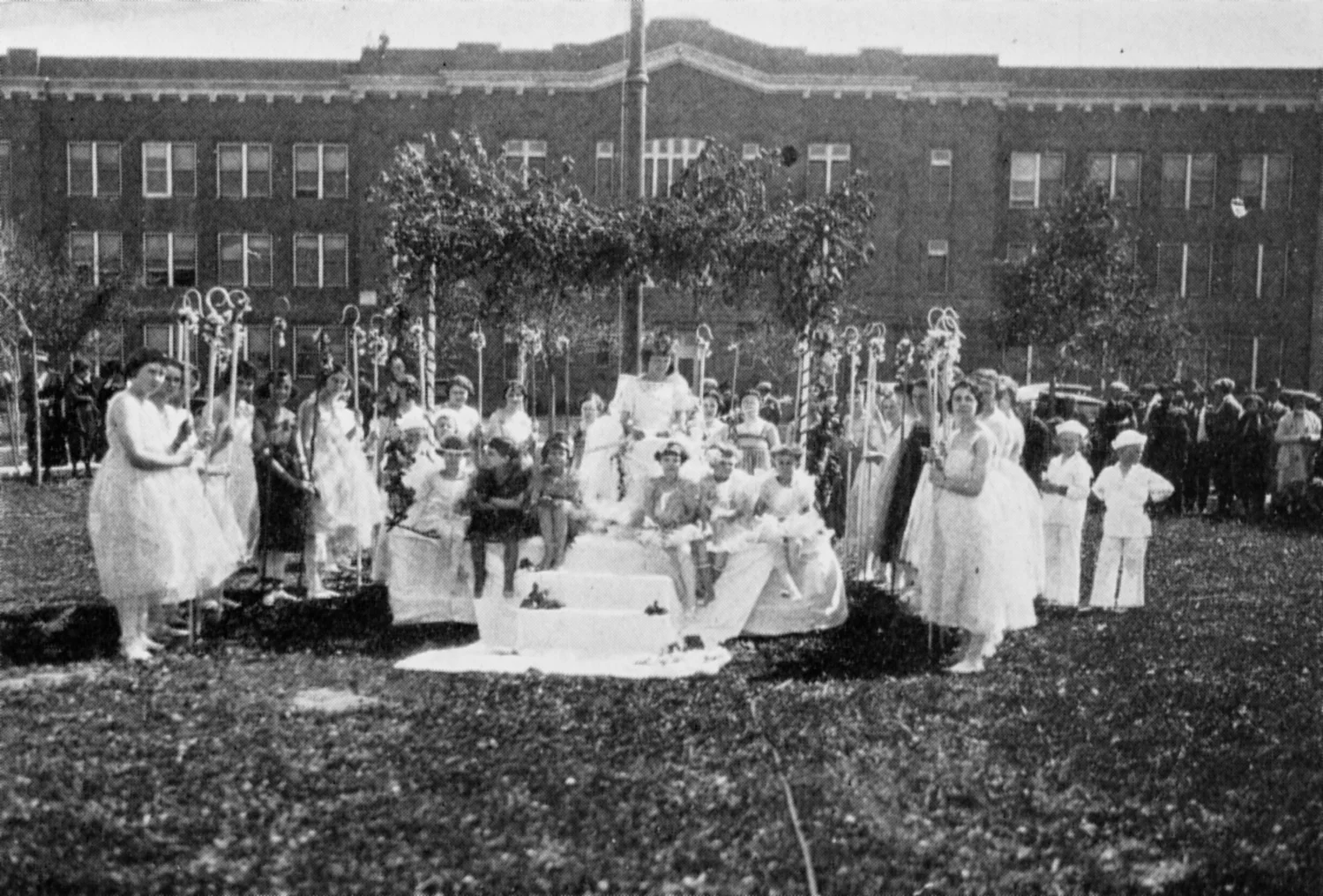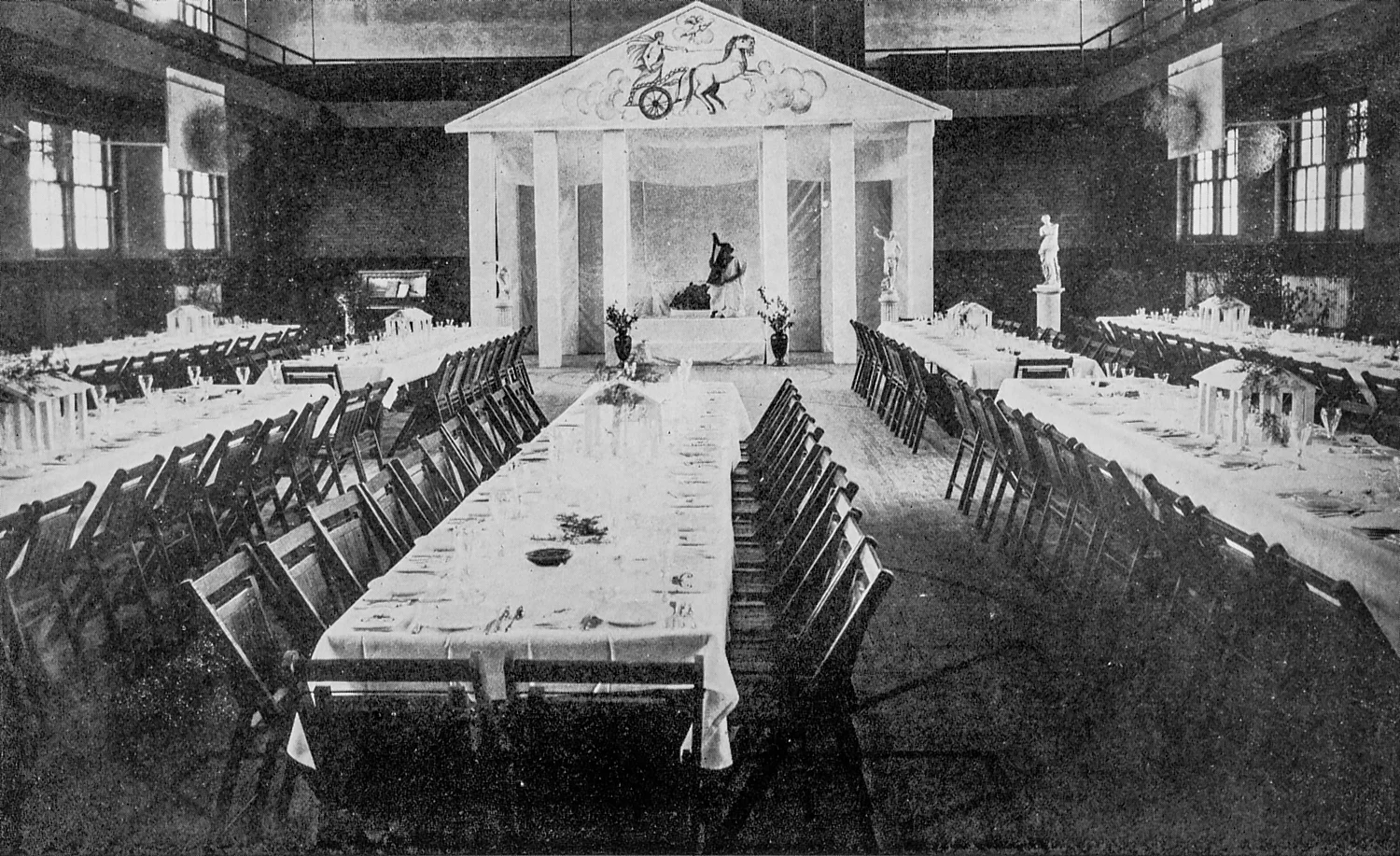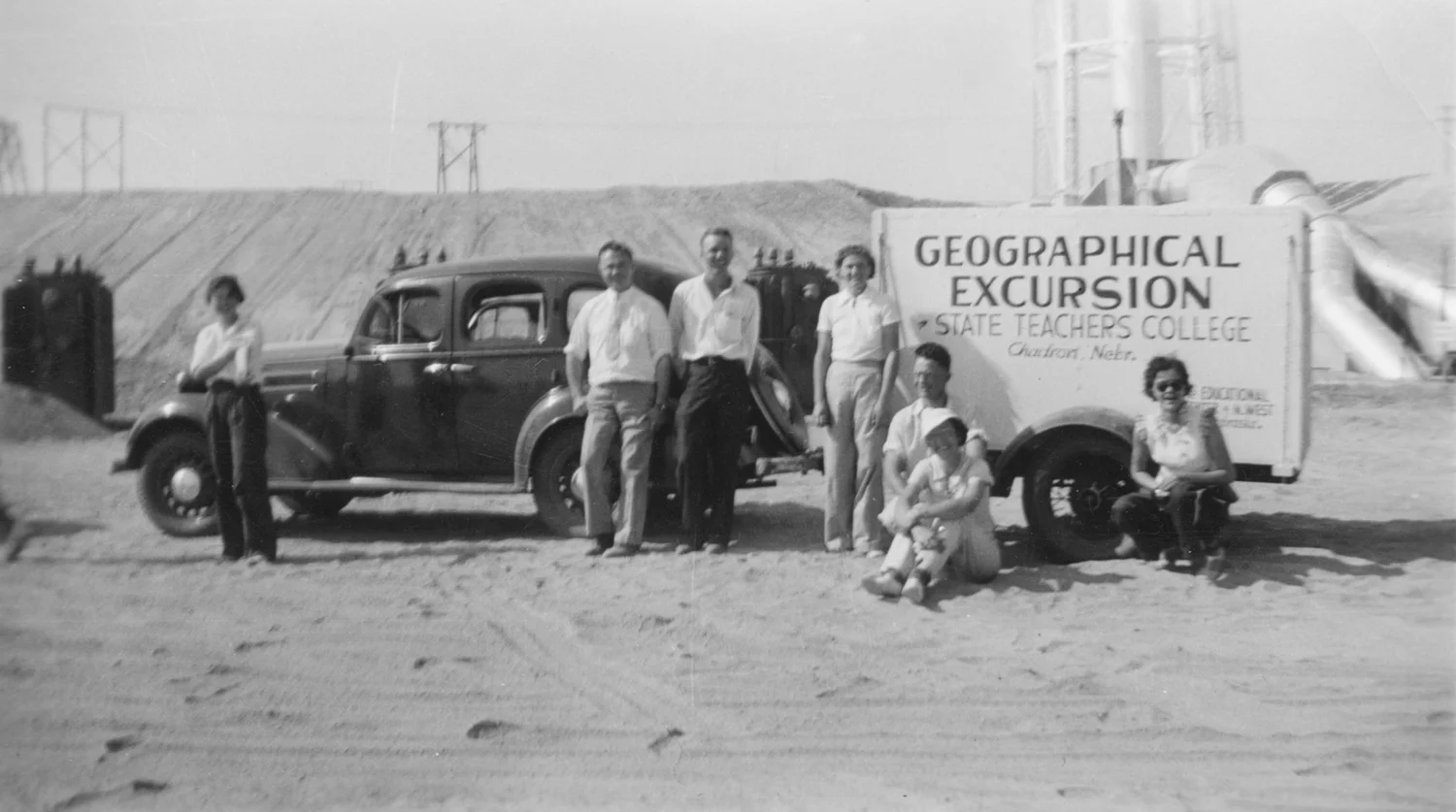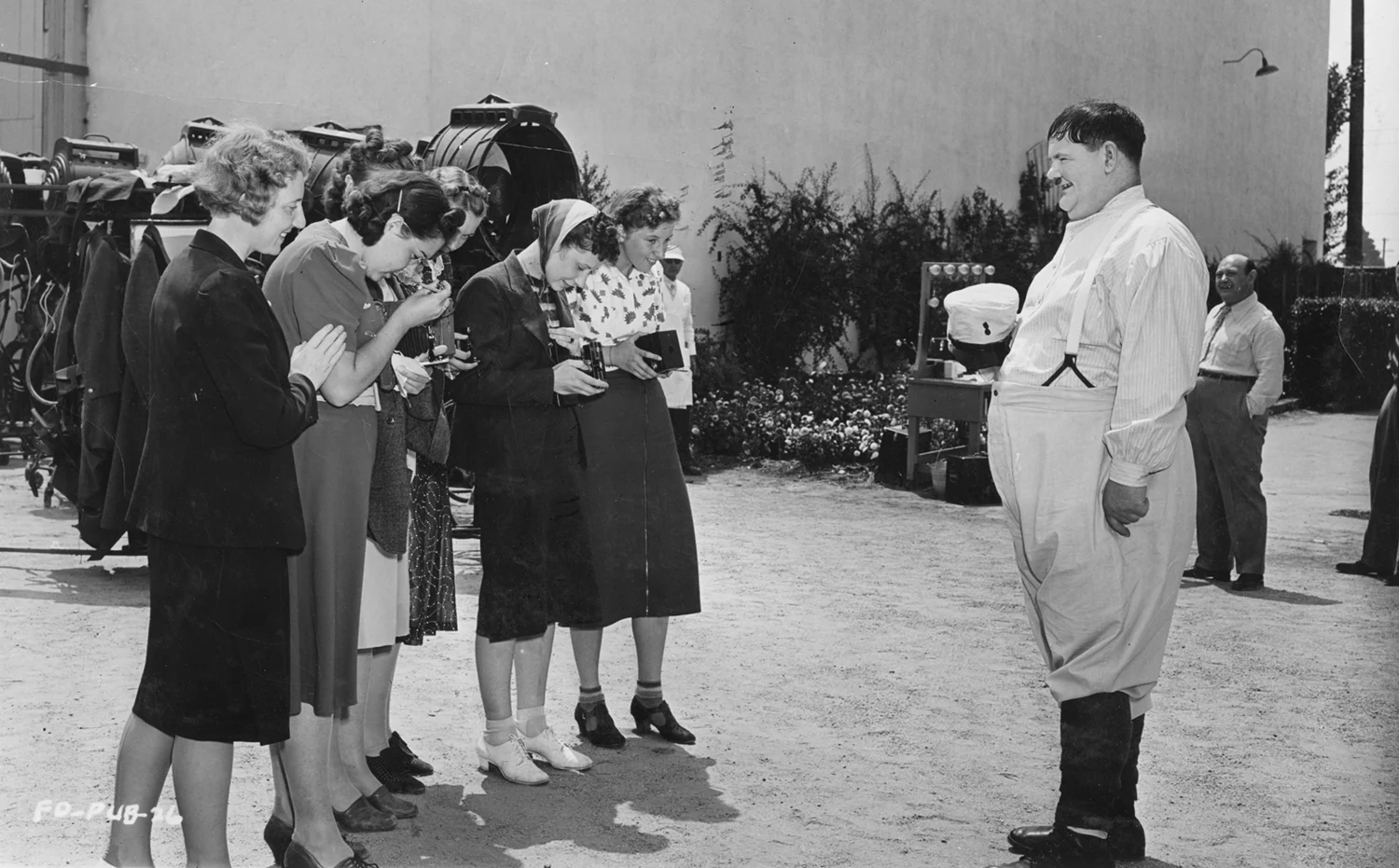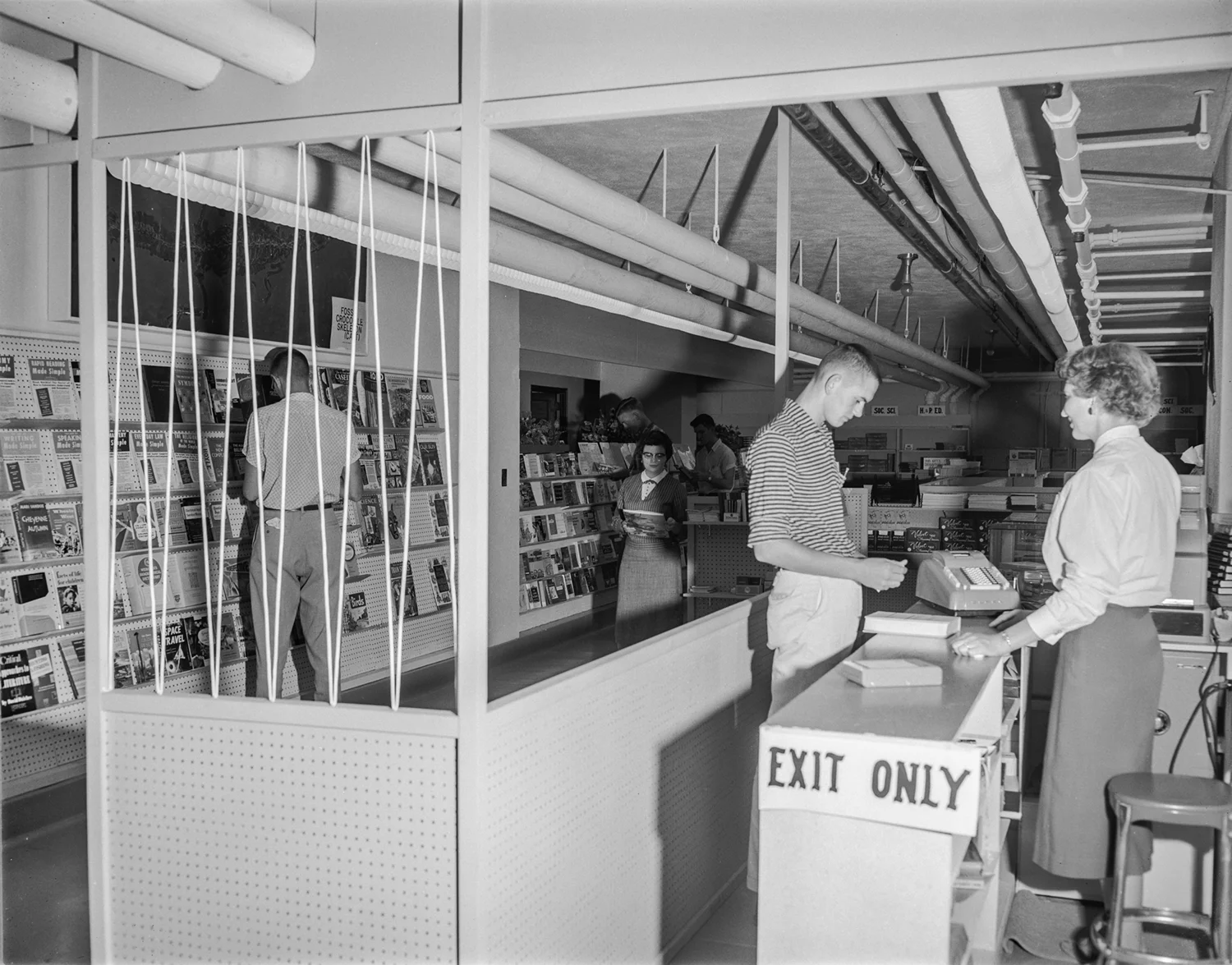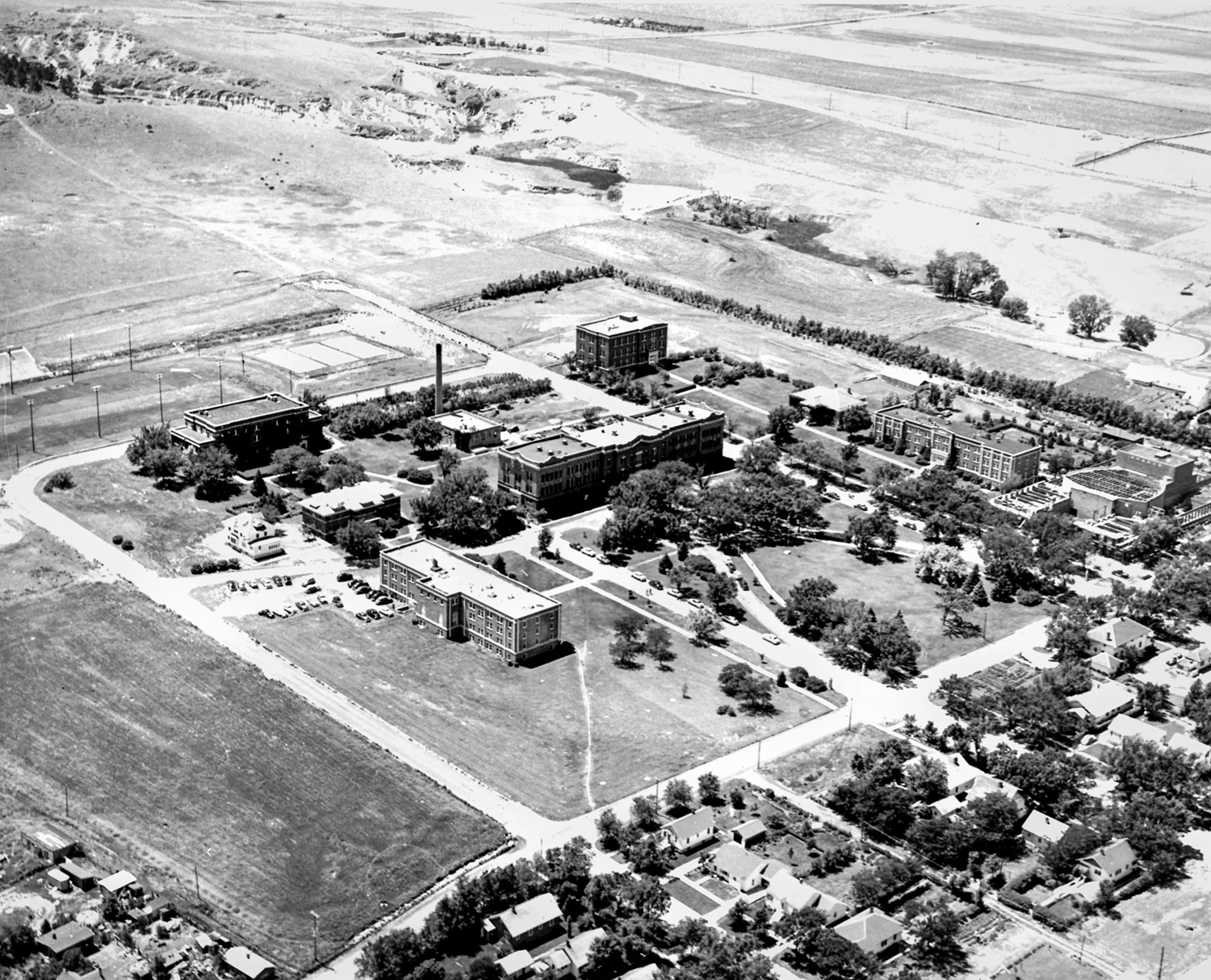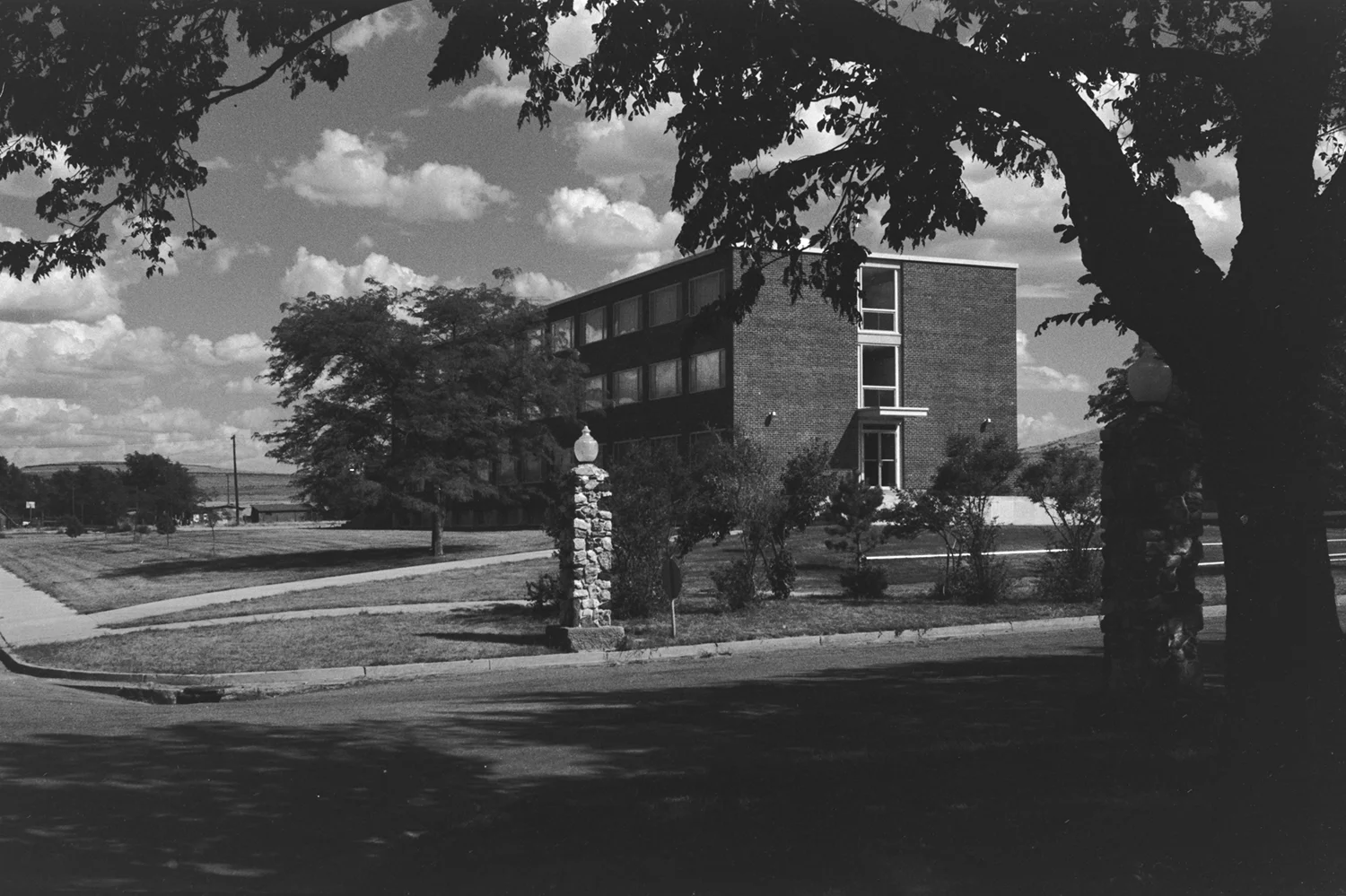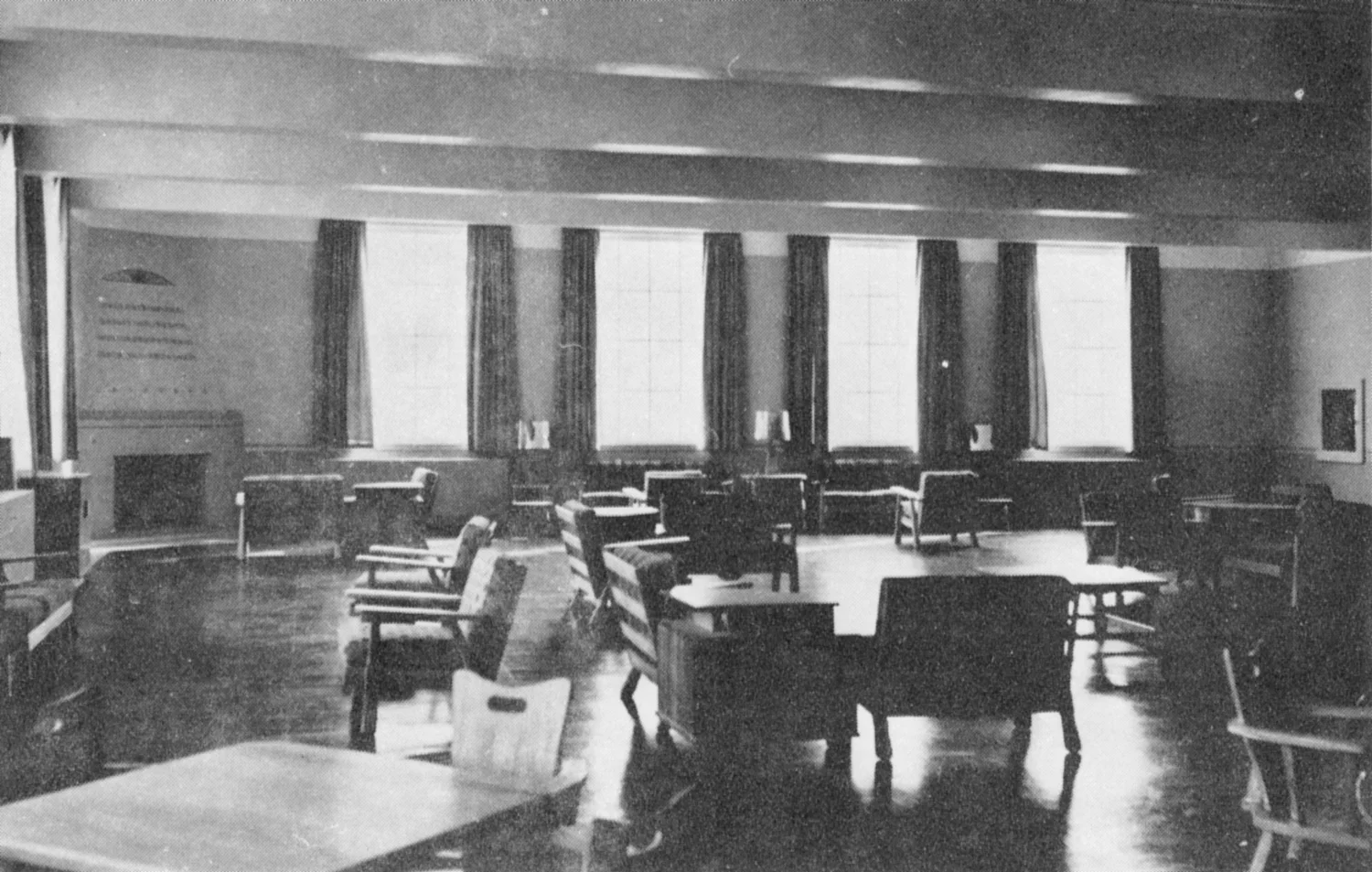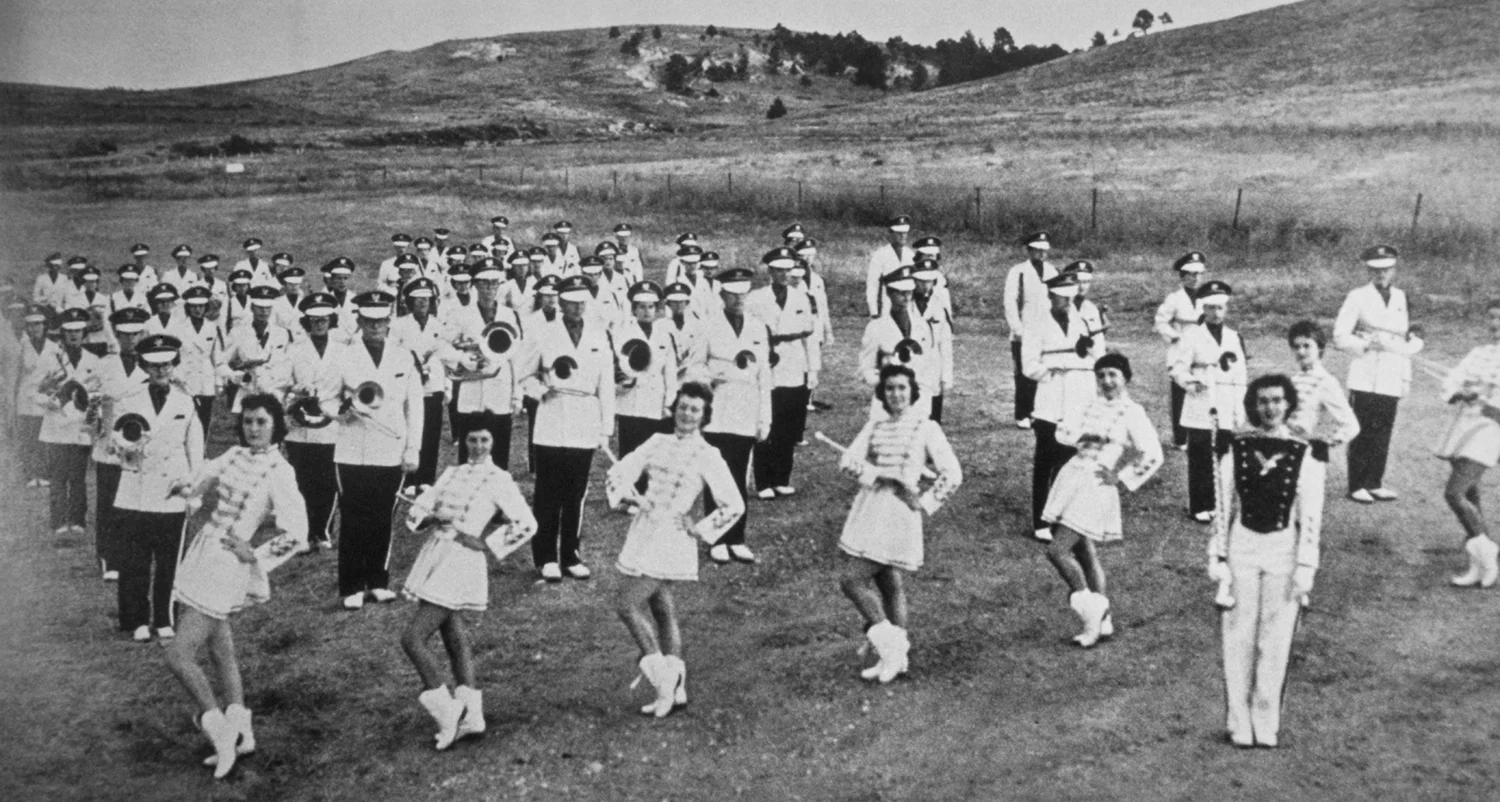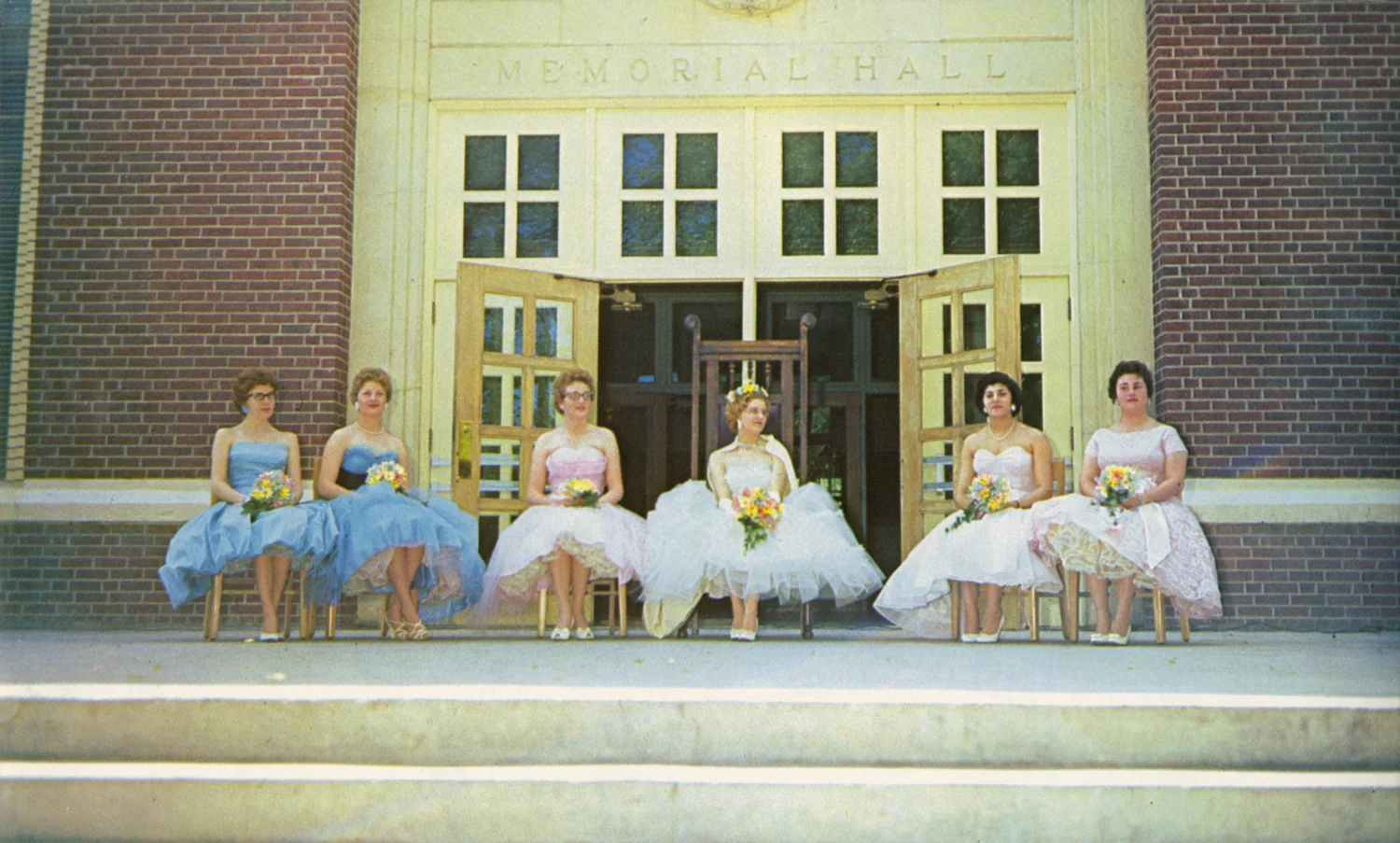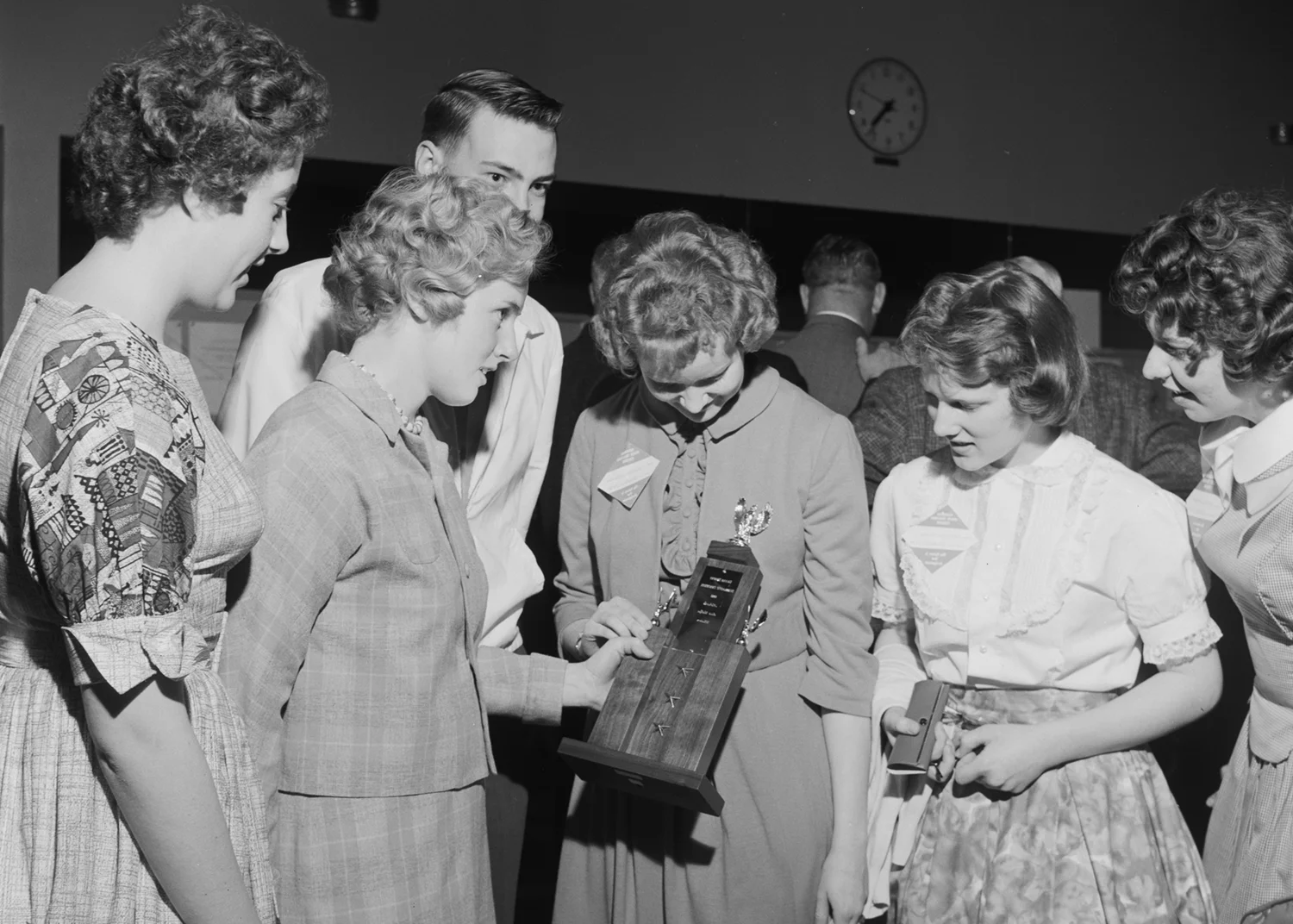Chadron State by the Decades
By Con Marshall
- Choose question
-
1910-1919
A bill introduced by Rep. Charles Chase of Crawford, calling for the establishment of a state normal (teacher education) school in what was then the Sixth Congressional District, was passed by the Legislature in the spring of 1909. In January 1910, Chadron was selected over five other towns in the northern tier of counties to become the site of the state’s fourth such institution.
Members of the Nebraska Board of Education came to Chadron on June 15, 1910, to drive the stake marking the center section of the Administration Building, now known as Old Admin, which cost $33,000. The board selected Joseph Sparks as the first president that day.
The initial term for Northwest Nebraska State Normal School began on June 5, 1911, with an enrollment of 111. Classes were at Chadron High School because the new building was still under construction. It was completed by the start of the fall term, when the enrollment was 248.
During the decade, three additions were made to complete the Administration Building, a women’s dormitory (now Sparks Hall) opened in 1915, Robert Elliott succeeded Sparks as the president, and the school was accredited as a teachers’ college by the North Central Association of Colleges and Secondary Schools.
- Choose question
-
1920-1929
A $90,000 gymnasium (now Miller Hall) and a new athletic field opened in 1921, the same year the first homecoming took place and the school officially became a teachers’ college. The large C was placed on the hill overlooking Main Street by math professor T.A.F. Williams in 1924.
The next year, the football team defeated the University of Colorado 3-0 in the season opener and beat Peru State 13-3 on Thanksgiving Day to complete the season 9-0. The training school (now Hildreth Hall) was constructed in 1926 for $94,800 and the library (now the Sandoz Center), which boasted of “18,969 volumes of the best reference and literary works,” opened in 1929. That year, the college was accredited by the American Association of Teachers Colleges. Enrollment was 406 in 1927.
- Choose question
-
1930-1939
The 1930s was a difficult decade for mid-America, but because of the grit possessed by the college’s leadership and students, Chadron State survived surprisingly well.
It was not easy. Faculty salaries were reduced by one-fourth in 1935 and the cuts were not restored until after 1942. Students reportedly went hungry at times, even though there were no tuition charges, dormitory rooms were $5 a month, and meals in the cafeteria $4 a week. Fortunate students worked as janitors and in maintenance for 25 cents an hour.
Using revenue bonds, both Work Hall and Crites Hall dormitories were constructed. Chadron State was among the 100 schools nationally receiving the highest rank possible from the AATC, and it was accredited as a liberal arts college.
Some students traveled extensively. Although the college cars had governors that kept them from going more than 45 miles an hour, the debate team entered tournaments as far away as Knoxville, Tennessee. Geography students, led by Dr. V. C. McKim, raised their own funds, prepared their own food, and camped out in tents each night while visiting nearly every state during summer tours at the end of the decade and into the early 1940s.
In 1937, the college celebrated its 25th anniversary by staging a pageant with a cast of 500.
Enrollment reached a record 464 in 1932 and was at least 420 the remainder of the decade as students saw a college education as the best means of escaping the poverty that persisted.
-
1940-1949
World War II nearly put higher education on hold for five years early in the decade. Enrollment officially was 95 in 1943 and five men, all 4-F, were in the student body in the fall of 1944. No new buildings were constructed during the decade and the athletic schedules were cancelled in 1943 and 1944.
A flight-training program begun in 1939 helped Chadron State survive. The Navy entered the program in 1942 and sent 30-man groups (three at a time) to the campus for 90 days of pilot training at the Chadron airport.
After the war ended in 1945, many GIs came to the college, but enrollment did not reach 400 again until 1949. The veterans formed three outstanding football teams that had a cumulative record of 25-5-1 and won or tied for two Nebraska College Conference championships 1947-49.
As the decade began, ill health forced Robert Elliott to end his 24-year tenure as the CSC president. He was replaced by Dr. Wiley Brooks.
- Choose question
-
1950-1959
Slow but steady progress occurred in the 1950s. The Korean War again took many of the men early in the decade, and enrollment was less than 330 from 1951 through 1953. By the end of the decade, the college had 717 students.
After submitting several requests, the state appropriated $700,000 to construct Memorial Hall. It opened in 1954 and housed fine arts, the cafeteria, and the student union. Brooks Hall, a men’s residence hall, opened in 1957.
A $1.1 million construction package was announced in 1959 to include $500,000 for the north half of the student union (later named the Kline Center), $357,000 to expand Work Hall, $148,000 for 24 married student apartments (West Court) and $125,000 for a new heating plant (the Sheaman Heating Plant).
In 1955, the college’s board authorized programs leading to master’s degrees so CSC graduates could become school administrators. Seniors began student teaching off campus in 1959. When Brooks resigned as president in 1954, he was replaced by Dr. Barton Kline.
Athletic highlights included a trip to the NAIA National Basketball Tournament in 1952 and an undefeated football team in 1958. The rodeo team was founded in 1955, and Don Meter won the national calf roping championship the next year.
- Choose question
-
1960-1969
Students born shortly after World War II started flocking to college campuses in the 1960s, and Chadron State’s enrollment grew to 2,332 by the end of the decade. That sparked a construction boom resulting in eight major buildings costing nearly $7.5 million.
Under the leadership of Dr. F. Clark Elkins, who was president 1961-66, the college expanded in other ways. Participation in the National Defense Student Loan Program began, employees received larger pay raises, the accreditation status was strengthened, four graduate programs were added, and the college adopted the motto “Nebraska’s Pioneering College.”
The college’s dean, Dr. Edwin Nelson, succeeded Elkins as president, and programs such as outdoor education, hail research, and the Post Playhouse began. The college participated in Upward Bound and Adult Basic Education to help prepare more students for college.
Late in the decade, Chadron State received special recognition twice from the American Association of Colleges of Teacher Education for its creative programs. Majors in law enforcement/criminal justice, earth science, recreation, sociology, and social work were added. Educational television was used to supplement classroom instruction.
-
1970-1979
Two buildings, Math Science and the Burkhiser Technology Complex, were constructed at a combined cost of $2.65 million. In 1971, CSC again earned national recognition for its cutting-edge educational programs.
Under the leadership of Dr. Larry Agenbroad, the earth science program drew national attention for the excavation of the Hudson-Meng Bison Kill Site northwest of Crawford and the Hot Springs Mammoth Site.
The agricultural curriculum, which had been discontinued in the 1950s, was reinstated in 1974 and blossomed into thriving agribusiness and range management programs. The college also began delivering numerous off-campus courses, making it possible for students to earn degrees while remaining in their home communities. CSC started offering courses in computer science in 1972.
Bob Lynch became the Eagles’ first national wrestling champion when he won the 158-pound title at the NAIA Tournament in 1971 and finished the season at 30-0. The football team won the Boot Hill Bowl at Dodge City, Kansas, in 1978 and the women’s rodeo team won the team title at 11 of the 14 rodeos in the Great Plains Region in 1978-79. Two of the cowgirls, Jean Fuchs and Kathy Kennedy, were national breakaway roping champions in 1978 and 1979, respectively.
-
1980-1989
The ’80s was an era of tremendous change at CSC. Enrollment, which had dipped below 2,000 at the end of the 1970s, reached 2,948 in the fall of 1989.
The college was recognized by the American Association of Teacher Educators for having “a distinguished program in teacher education” in 1981. CSC students won three straight championships in the graduate division and one in the undergraduate division of the International Business Policy Games in Reno, Nevada. The U.S. Department of Education cited CSC for its leadership in rural education in 1984.
Also in 1984, the Legislature appropriated $990,000 from cigarette taxes to renovate Memorial Hall and voted to override the governor’s veto by appropriating $4.7 million to construct an activity center (the Nelson Physical Activity Center).
The latter building, which was then the largest ever constructed on a state college campus, was named for Ed Nelson and his wife, Avis. He resigned as president in 1986 after nearly 18 years. Dr. Sam Rankin replaced him.
As the decade drew to a close, the college received a $300,000 appropriation for computer equipment, adopted a Non-Resident Scholars Program that permits outstanding students from other states to attend CSC by paying resident tuition rates, and CSC became a leader in the delivery of off-campus courses through interactive distance learning.
-
1990-1999
The 1990s included several major construction projects, numerous noteworthy academic achievements, a surge in technology and more enrollment records, reaching an all-time high of 3,693 in 1992.
Early in the decade, the University of Nebraska Medical Center and Chadron State formed RHOP, the Rural Health Opportunities Program. CSC also joined the Rocky Mountain Athletic Conference, was authorized to offer a Master of Business Administration degree, constructed a $5.8 million Student Center and erected the Lindeken Carillon Clock Tower. In addition, the college began heating and cooling its buildings by burning wood chips from the surrounding Pine Ridge forests. The system has saved millions of dollars since its installation.
A federal grant obtained in 1994 allowed students to earn credit and gain work experience through internships. That year, CSC began installing fiber optic cables in the residence halls for computer connections and opened its website in 1995. Nearly 100 computers were installed in campus laboratories the following year and CSC offered its first courses over the Internet in 1997.
Also in 1997, the Legislature approved $2.4 million to convert Miller Hall—the college’s first gymnasium—into a state-of-the-art classroom facility and headquarters for IT. Nearly $1.4 million was provided to remodel the Burkhiser Complex so it could accommodate the Business and Economics Department.
Rankin resigned as president effective July 1, 1998, and was replaced by Dr. Tom Krepel, who had previously served as academic vice president.
-
2000-2009
Chadron State had its ups and downs since the turn of the century. Speaking at the college in September 2010, Chancellor Stan Carpenter borrowed from Charles Dickens’ famous line, calling it “the best of times, the worst of times.”
Because of economic downturns, the ratio of state support declined during the decade, causing numerous positions to go unfilled and tuition to double. CSC’s in-state undergraduate tuition rate remained lower than a majority of its peer institutions.
About $24 million was spent on capital improvements that included renovation of Memorial Hall, conversion of the old library into the Mari Sandoz High Plains Heritage Center and Coffee Cattlemen’s Gallery, and construction of the Maintenance Building. The upgrades also featured renovation of Work Hall and Wing, conversion of Sparks Hall into headquarters for the college’s central administration and alumni and foundation offices, and renovation of the Administration Building into a stylish classroom facility, now named Old Admin.
The college added a bachelor’s degree in Applied Sciences and a master’s degree in Organizational Management. High honors were earned by “The Eagle,” the college’s student newspaper, the range management program, and business club Students Involved in Free Enterprise. Newsweek/Kaplan College Catalog called CSC “a hidden treasure” and cited it for providing “a high level of individual attention from faculty.”
Dr. Janie Park became the college’s 10th president in 2005, the Spotted Tail Fire burned about 10 miles of timber and grassland before fire crews stopped it at the southern edge of the campus in late July 2006, and the college received a large number of mounted animals from Cabela’s for use in the wildlife management program in 2009.
The football team had its best decade from 2000-09, winning 87 of 112 games, won 28 RMAC games in a row, claimed five conference championships, won three playoff games, and was ranked fifth in the nation in 2006 and 2007 after finishing with 12-1 records.
Danny Woodhead became college football’s all-time leading rusher and won two Harlon Hill Trophies, Will Farrell and Dustin Elliott won national bull riding championships, and Brett Hunter won two national wrestling titles and Josh Majerus one. A large percentage of the Eagles’ track and field records were set during the 2000s.
U.S. News and World Report consistently listed CSC among the top colleges in the 12-state Midwest region, and ranked it as the sixth best public institution on the list of 319. Another publication placed CSC among the top 15 schools in the nation for service to military veterans.



